Gedung Arsip Nasional – Observation Report
Abstract
The National Archive Building, which is located in Jakarta, Indonesia, and is part of Jakarta’s cultural heritage, is still in a good condition. Still, it may not be maintained because costs are too high and visitor numbers too low. This report aimed to determine the factors that have a negative impact on the preservation and attractiveness of the National Archives Building and to develop suggestions on how to improve the condition of the museum based on these factors. The analysis indicated that the museum does not offer sufficient parking space and barrier-free accessibility. Moreover, not many exhibition pieces are provided and a lot of empty rooms can still be filled with more details. In addition to that, no options to buy food, drinks, or souvenirs are offered. Most objects do not have a label or are only labeled in Indonesian. Finally, there are no guided tours available. Based on these factors, it was suggested to offer more parking options and handicapped accessibility. Also, it was advised to use the empty room and exhibit more pieces to make the museum more interesting. Additionally, shops offering food, drinks, and souvenirs should open their business in the area to attract more visitors. Furthermore, all exhibition pieces should receive informative signs in Indonesian and at least also in English. Lastly, it was suggested to provide tour guides.
One of the various museums located in Jakarta, Indonesia is the National Archives Building (Indonesian: Gedung Arsip Nasional, Image 1). The house, which used to be the private residence of Governor-General Reinier de Klerk in the late 18th century, belongs to Jakarta’s cultural heritage. The building is representative of an Indies-Style house of the earliest period (Akihary, 1990).
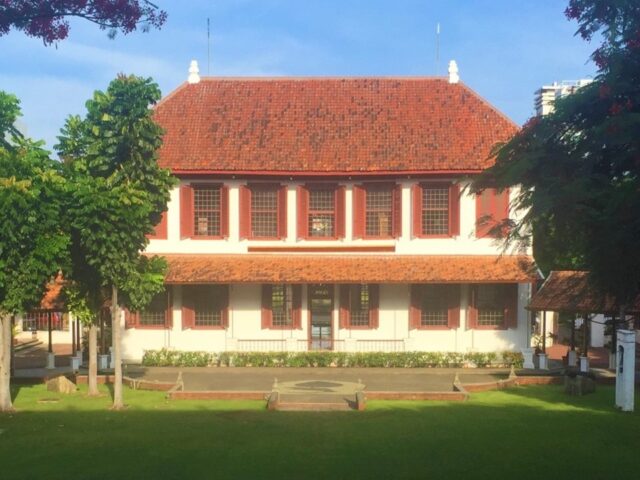
The building was built in 1760 by Reinier de Klerk (1710-1780), as an architect of this building Reinier de Klerk was also noted as the governor-general of the Vereenigde Oost-Indische Compagnie [United East India Company] (VOC) in 1777 (Messakh, 2008). The house includes four rooms that are open for a visit, a large front yard, and a large back yard with a belfry and gun barrels (Taylor, 1983). The ground floor is 57 meters and the length is 164 meters. According to Messakh (2008), the house of the Clerk changed its owner several times, and in the 19th century, it became an orphanage. Additionally, the author says that at that time the building began to be neglected because of a lack of funding for repairs, The Batavia Society for Arts and Sciences then joined the Dutch East Indies government to buy the house from De Klerk. The author further states that the government was successful and became the Department of Mining. In 1925 the Dutch government performed a major restoration for the first time in the 20th century and after the completion of the building as an archive in 1992 the last archive was moved to the new National Archives on the Ampera Road (Messakh, 2008). Despite not keeping the archive, the name remains Gedung Arsip Nasional (Messakh, 2008).
The condition of the building looks still robust, but because the costs to take care of the building are too high it might not be maintained. Moreover, getting into the building is free of charge, so it is dependent on donors and sponsors. No other visitors visited the museum while the author of this report was visiting the house, which indicates a low visitor number. Tour guides were not available when visiting the area. Only the security guards could give the author of the report some information about the history of the building. The toilets look clean and modern and are free of charge.
This report aims to determine factors that influence the maintenance and attractiveness of the National Archives Building in a negative way and then develop suggestions on how to improve the condition of the museum on the basis of these factors. For that, the author of this report visited the building to analyze the area for fields that can be changed to help to attract more visitors while at the same time preserving the cultural heritage.
Geographical / Physiographic Conditions of the Object of Research
The National Archives Building has located nearby the center of Jakarta. Jakarta is the capital city of Indonesia on the island of Java, which lies between Sumatra and Bali. The barely changing climate tropical climate in Indonesia is similarly hot and humid over the whole year. Java is spiked with volcanos. Jakarta is 8 m above sea level, includes approximately 6.392 km², and comprised a population of about 10 million in 2014 (Jakarta Open Data, 2015). The address of the museum is Jalan Gajah Mada No.111, RT.1/RW.1, Krukut, Tamansari, Kota Jakarta Barat, Daerah Khusus Ibukota Jakarta 11140. Image 2 shows the location of the building on a map.
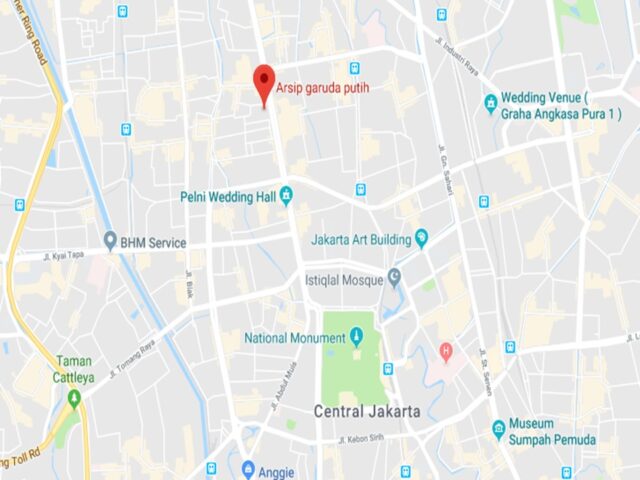
Accessibility
The building is open for visits approximately from 9:00 until 17:00 during weekdays and closed on the weekend. The entrance is free of charge. One can arrive by taxi, public bus, or private vehicle. There are some but few parking options. As the building has stairs at all entries it is not handicapped accessible. Only the ground floor is accessible. The stairs to the second floor are closed.
Tourist Attractions
Relicts of the Dutch era such as cabinets, chairs, work desks, safes, weapon collections, and a gramophone are exhibited in the rooms of the building. The backyard provides some gun barrels and a belfry. All in all the collection is small and the museum displays a lot of empty space.
Amenity
The museum offers air conditioning for the comfort of its visitors. Some of the exhibition pieces are labeled most of them in the Indonesian language and only a few also offer a description in English. Besides that, no further amenities are offered.
Advice on the Development of the Accessibility
As there are not many parking options in the area around the museum, more parking spots are needed. In Image 3 it is visible that the parking space in front of the museum is small; even though it is not visible in the picture that there is just as much parking space again on the opposite side
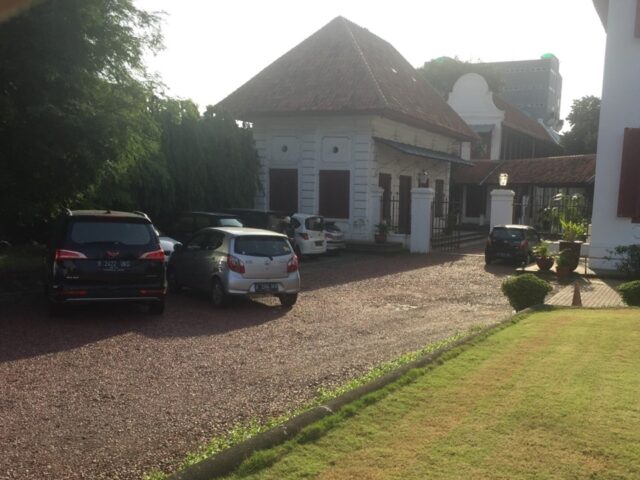
Furthermore, the building is not barrier-free as there are stairs at each entry which is why the house is hardly accessible for handicapped people without help from others (Image 4). Apart from that, the museum is easily accessible by taxi or public buses.
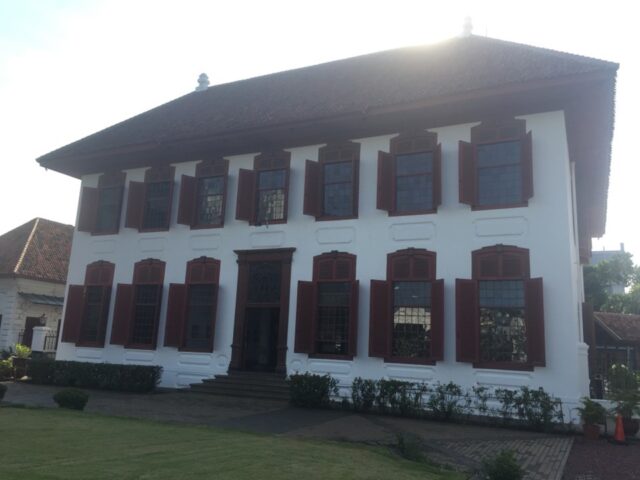
Advice on the Development of the Attractions/ Tourist Attractions
As partly visible in Image 5 the archive has a lot of empty space and there are only a few exhibition pieces to see. The house could be filled with many more exhibition pieces as there is much room for them available.
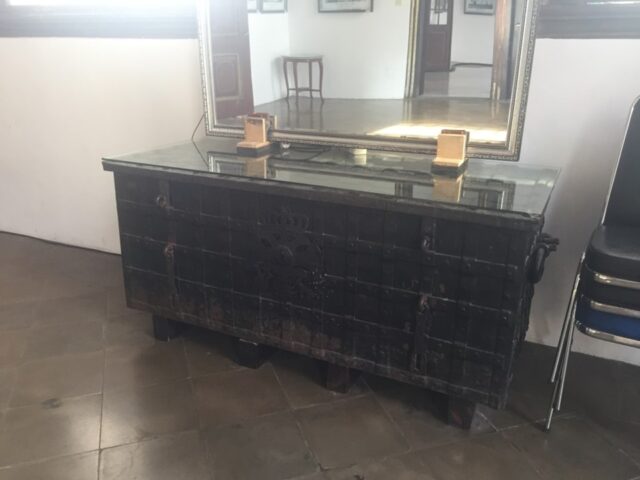
Also, there is no option to buy food, drinks, souvenirs, or other supplies to attract more visitors and that could serve as an opportunity to raise money for the maintenance costs of the museum.
Advice on the Development of the Amenity
Images 6 and 7 show one of the few informative signs available in the building in Indonesian and English. Unlike visible in Images 6 and 7, most of the exhibition pieces do not have a label or were only in the Indonesian language and therefore not comprehensible for visitors who cannot speak Indonesian. Also, no tour guides are provided for the museum.
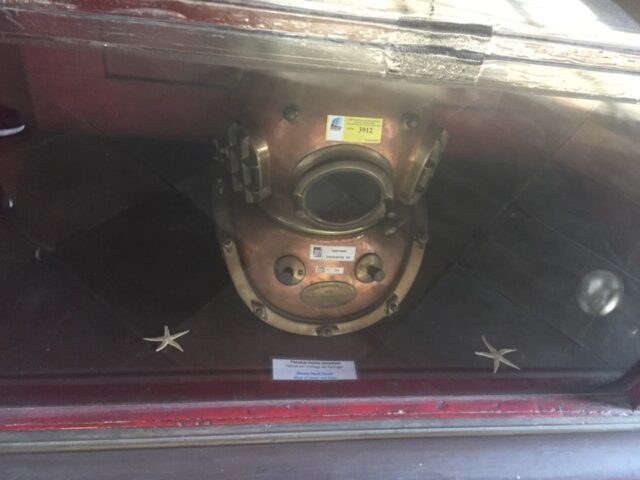
The aim of this report was to determine factors that have a negative impact on the maintenance and attractiveness of the National Archives Building and to develop suggestions on how to improve the condition of the museum on the basis of these factors. The following suggestions can be made based on the analysis of the factors that have a negative influence on the condition of the museum.
More parking spots should be provided in front of the building or at the side of the street by the building to offer sufficient parking space for visitors. The handicapped accessibility of the house should be improved for people with disabilities, e.g. by providing hand grips by the stairs at the entrances of the building and ramps for wheelchairs.
Overall, more pieces should be exhibited in the museum to make it more diverse and interesting to visit. A souvenir shop and a restaurant or other options to buy food and drinks should open their business in the area. The money from the souvenir shop could help in the maintenance of the building, while both, the shop and options to buy food and drinks in the area, would attract more visitors and keep them in the area for a longer time period.
All exhibition pieces should receive informative signs with descriptions in Indonesian as well as in the English language. Additional translations such as in Mandarin would promote the attractiveness of the destination for even more visitors of different ethnicities. Moreover, knowledgeable tour guides should be made available for visitors that could give additional information about the area and the exhibition pieces. Tour guides should speak at least English and any additional language offered would add to the attractiveness of the museum as a tourist destination for tourists of different ethnical backgrounds. Besides answering visitor questions tour guides can also pay attention that visitors do not touch the exhibition pieces, litter, or the like to protect the area from damage and thus, keep up the desirability of the destination.
Finally, it is advisable to place a donation box clearly visible next to the entry to give visitors the option to donor directly.
References:
Akihary, H. (1990). Architectuur & stedebouw in Indonesië: 1870/1970. De Walburg.
Google. (n.d.) Arsip garuda putih. Retrieved from https://www.google.com/maps/place/Arsip+garuda+putih/@- 6.1373866,106.8105776,13.8z/data=!4m5!3m4!1s0x2e69f60a61cc63fd:0x c4900f5e5c303c06!8m2!3d-6.153756!4d106.8167526
Jakarta Open Data (2015). Pemerintah Provinsi DKI Jakarta, Dinas Kependudukan dan Catatan Sipil. 2014. Retrieved from http://data.jakarta.go.id/dataset?q=%29.+Pemerintah+Provinsi+DKI+Jakar ta%2C+Din as+Kependudukan+&sort=score+desc%2C+metadata_modified+desc
Jalan Jajan Hemat. (2019). Gedung Arsip Nasional | Jalan Jajan Hemat. [online] Retrieved from http://www.jalanjajanhemat.com/2009/04/gedung-arsip- nasional/.
Messakh, M., V. (2008). A home truth about the house of a Dutch governor-general. The Jakarta Post. PT. Niskala Media Tenggara.
Taylor, J., G. (1983). The Social World of Batavia: European and Eurasian in Dutch Asia (illustrated ed.). Madison: The University of Wisconsin Press.
